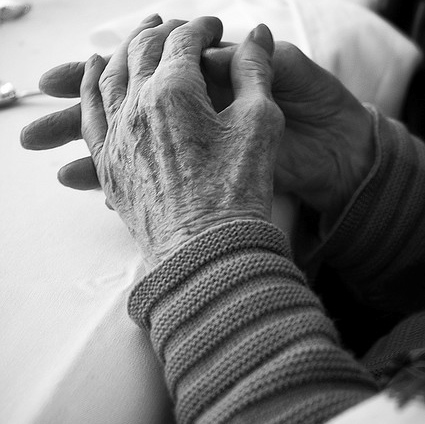
The ethnically diverse population of Los Angeles County is considered a petri dish for the nation’s fast-growing cultural soup, with city and county aging agencies a model for progressive, compassionate care.
Healthwise, what will the future hold for aging adults in America’s largest county?
More seniors. Fewer specialists to care for them. And vast ethnic disparities.
Today’s report from USC’s Edward R. Roybal Institute on Aging outlines the plentiful challenges facing seniors in this sprawling metropolis of over 10 million.
Today, almost 25% of L.A. seniors have “no regular source of medical care” while over 30% have difficulty accessing care, according to the Los Angeles Healthy Aging Report 2015.
The reasons are two-fold: besides cultural barriers for L.A.’s plentiful Latinos (half of the population), Vietnamese, Koreans and other ethnicities, there are up to one million undocumented people of all ages, according to the study’s lead researcher William Vega, who directs the Institute, part of USC’s School of Social Work.
Meanwhile, as life expectancies increase, L.A. is smack dab in the midst of an older adult population explosion. Between 2010 and 2020 the 50+ population will grow 27%, the over 65 population will increase by 43%, and the 65-79 population will expand 52%.
The following decade – from 2020 to 2030 – older adults 80 and above will grow almost 50%.
All of this will present a huge challenge for health planners.
“The workforce is seriously deficient in all areas,” says Vega, citing a shortage of both geriatricians and primary care physicians who understand senior health. “The medical schools are grossly under-producing either primary care physicians or specialists in these areas.”
And while the report outlines many intriguing health statistics – Pacific Islanders have the city’s longest life expectancy, while Latinos suffer from diabetes in twice the numbers as whites – through it all the most compelling story is the enormous disparity in care around the city.
“LA has a special problem that you’re not going to see in many areas because it’s so huge,” says Vega. “You have many ‘cities,’ basically, that are so poor and disconnected.”
The problem is acutely illustrated by L.A.’s eight service planning areas, or SPAs. The West SPA, which includes Santa Monica, has 1,100 physicians per 100,000 residents, while the South SPA that includes Compton has just 49 physicians per 100,000 residents.
These figures may help explain the high rates of hypertension among African-Americans that result in heart attack, stroke and cardiovascular disease – among other health concerns.
Perhaps most frightening are the rates of workers to retirees. In 2010 there were more than six workers per retiree, while in 2036 there are expected to be fewer than three workers per retiree. That means fewer caregivers to care for an aging populous.
At the request of local aging experts – and at the risk of seeming paternalistic – the report includes no specific recommendations for change.
Yet in an interview, Vega ticks off several areas that are critical for improvement: affordable housing, improved transportation options, greater emphasis on nutrition, and age-friendly neighborhoods with smoother sidewalks and extended crossing times at intersections.
While comprehensive and immensely helpful for health planners, the report is not especially optimistic, and Vega knows it.
“There are a lot of steps to think through and not a lot of time to do it.”
The best way to make change, he insists, is continuing to move towards patient-centered medical homes where all services are coordinated under one roof, and self-managing health conditions is emphasized.
“And those kinds of policies have never existed before.”





